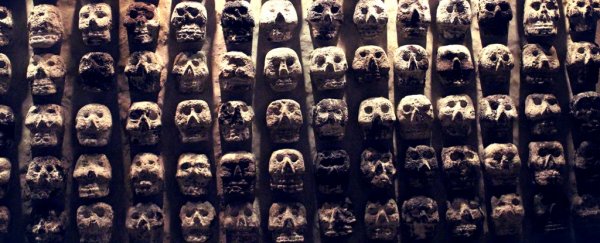When European conquistadors sailed for the New World, their conquest was invisibly assisted by a devastating, unseen ally in the form of disease.
Now, scientists have identified the likely culprit behind the deadliest epidemic recorded in this dark chapter of history – it wiped out up to 80 percent of the native population of Mexico, claiming as many as 15 million lives.
While their results were previously made available on the pre-print server bioRxiv, the study has now been officially published in a journal, and the findings are absolutely fascinating to dive into.
Ancient DNA extracted from the teeth of victims of the 1545-1550 epidemic reveals the first known occurrence of Salmonella in the Americas, indicating the deadly presence of Salmonella enterica, the bacterium responsible for enteric fever (related to typhoid fever).
At least, that's what we call it now. When this devastating illness swept through what is now Mexico and Guatemala, it was known by another name in the indigenous Nahuatl language: cocoliztli (pestilence) or huey cocoliztli (great pestilence).
The Spaniards had their own term for it: pujamiento de sangre (abundant bleeding, or full bloodiness).
Whichever language you spoke, it spelled death.
"The fevers were contagious, burning, and continuous, all of them pestilential, in most part lethal. The tongue was dry and black. Enormous thirst," a Franciscan friar called Fray Juan de Torquemada described the symptoms in 1576, during which the epidemic experienced a second burst.
"Urine of the colours sea-green, vegetal-green, and black, sometimes passing from the greenish colour to the pale. Pulse was frequent, fast, small, and weak – sometimes even null."
Those infected experienced delirium, dysentery, seizures, and endured copious bleeding and vomiting.
Up until this latest study, these terrible experiences had been suggested to come from other biological causes – such as measles, smallpox, typhus, or viral haemorrhagic fever.
But now a team led by researchers from the Max Planck Institute for the Science of Human History in Germany has the first direct DNA evidence to back up an alternative explanation.
Almost 30 skeletons were excavated from the Mixtec town of Teposcolula-Yucundaa in Oaxaca, Mexico, where cocoliztli victims were buried hundreds of years ago.
Using a new DNA screening technique called Meta Genome Analyser Alignment Tool (MALT) on the remains, the researchers discovered a strain of S. enterica called Paratyphi C.
This doesn't mean other pathogens weren't somehow involved in the deadly epidemic, the researchers acknowledge; but right now, the only bug detected was S. enterica Paratyphi C – most likely carried to the New World by the Spanish, and the strongest candidate we've got to account for this historic loss of life.
"The cocoliztli is a mysterious historical epidemic, and over the years many have speculated on its cause," one of the researchers, physical anthropologist Kirsten Bos told CNN.
"This is the first time that ancient DNA has been successful in identifying a candidate pathogen for it."
As impressive as that discovery is, the real news here may not lie in the past, but in the future ahead.
Thanks to the algorithm behind MALT – which for the first time allows researchers to compare extracted DNA to a wide variety of potential matches, like making up a jigsaw – scientists will be able to identify the biological causes of ancient plagues like never before.
"This is a critical advancement in the methods available to us as researchers of ancient diseases," Bos explains in a press release.
"[W]e can now look for the molecular traces of many infectious agents in the archaeological record, which is especially relevant to typical cases where the cause of an illness is not known a priori."
The findings are reported in Nature Ecology & Evolution.
